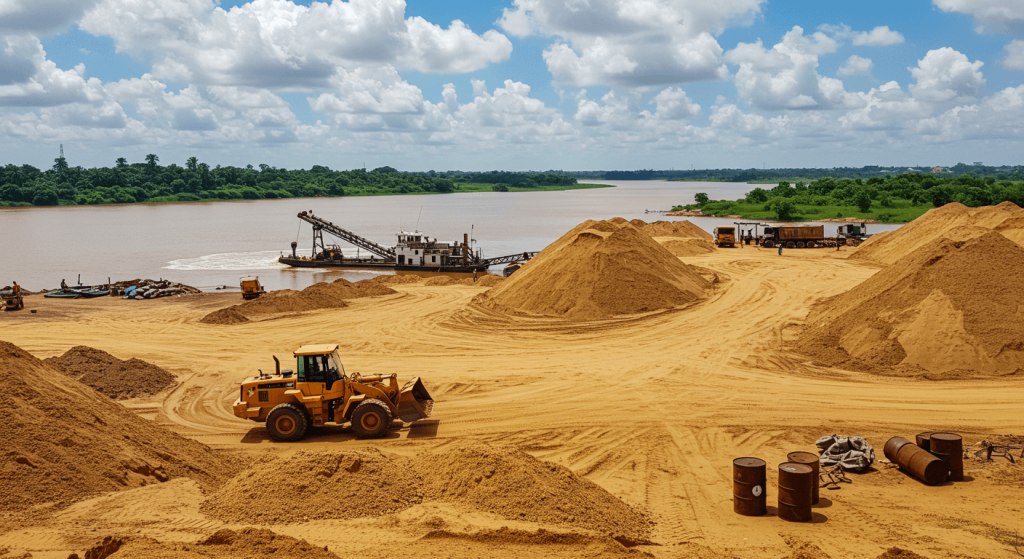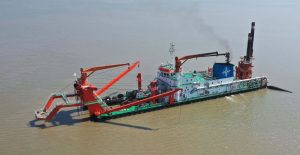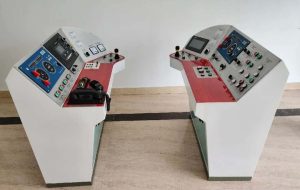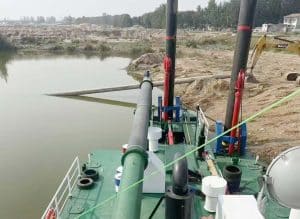| Key Feature | Benefit |
|---|---|
| High-capacity extraction | Efficiently removes large volumes of sand from rivers and lakes |
| Durable components | Withstands abrasive materials for longer operational life |
| Customizable options | Adaptable to various project requirements and environments |
| Global standards compliance | Ensures reliability and performance across different regions |
Are you looking for an efficient way to extract sand from rivers, lakes, or construction sites? A sand pump machine might be exactly what you need! These powerful devices make sand extraction easier, faster, and more cost-effective than traditional methods.
In this complete guide, I’ll walk you through everything you need to know about sand pump machine – from how they work to choosing the right one for your project. Let’s dive in!
What is a Sand Pump Machine?
A sand pump machine (also called a sand dredging pump) is a specialized piece of equipment designed to extract sand and other materials from underwater environments. Think of it as a super-powered vacuum cleaner for sand!
“The right sand pump machine can dramatically increase efficiency on dredging projects, reducing labor costs while improving extraction rates.” – Industry Expert
These pumps use powerful suction to pull sand, gravel, and silt from the bottom of rivers, lakes, and coastal areas. Then, they push this material through pipes to where it’s needed – whether that’s a processing facility, construction site, or land reclamation project.
Types of Sand Pump Machines
Not all sand pump machines are created equal! Depending on your specific needs, you might want to consider these common types:
1. Submersible Sand Pumps
These sand pump machines work completely underwater. They’re great for:
- Deep water extraction
- Projects with limited space on land
- Operations requiring mobility underwater
2. Centrifugal Sand Pumps
The most common type of sand pump machine, centrifugal pumps use spinning force to move sand and water. Benefits include:
- High flow rates
- Relatively simple maintenance
- Good for continuous operation
3. Hydraulic Sand Pumps
Powered by hydraulic systems, these sand pump machines offer:
- Excellent power-to-size ratio
- Better handling of thick slurries
- Adjustable flow rates
4. Mini River Sand Dredging Pumps
Perfect for smaller projects, these compact sand pump machines provide:
- Portability and ease of setup
- Lower initial investment
- Suitability for shallow water operations
How Does a Sand Pump Machine Work?
Understanding how a sand pump machine works can help you choose the right one. Here’s a simple breakdown:
- Intake: The pump creates suction that draws in a mixture of sand and water
- Processing: Inside the pump, an impeller (spinning wheel) forces the mixture through the pump
- Transport: The sand-water mixture (slurry) travels through pipes to its destination
- Separation: At the destination, the sand settles out from the water
The process is surprisingly simple, but a good sand pump machine makes it happen efficiently and with minimal downtime.
Key Features to Look for in a Sand Pump Machine
When shopping for a sand pump machine, pay attention to these important features:
Pump Capacity
This tells you how much material the pump can move. Look for specifications like:
- Flow rate (cubic meters per hour)
- Head height (how high the pump can push material)
- Solids handling capability (maximum size of particles)
Durability and Materials
Since sand pump machines handle abrasive materials, durability is crucial. The best pumps feature:
- Wear-resistant linings (often rubber or hardened metal)
- High-quality seals to prevent leakage
- Corrosion-resistant components for saltwater use
Power Source
Different sand pump machines use different power sources:
- Electric (clean, quiet, good for regular use)
- Diesel (portable, works in remote areas)
- Hydraulic (powerful, good for heavy-duty applications)
Maintenance Requirements
Regular maintenance keeps your sand pump machine running smoothly. Look for:
- Easy access to wear parts
- Availability of replacement components
- Simple servicing procedures
Applications of Sand Pump Machines
Sand pump machines are incredibly versatile tools used in many industries:
Construction Industry
In construction, sand pump machines help with:
- Sourcing sand for concrete production
- Dewatering excavation sites
- Creating foundations in waterlogged areas
Mining Operations
Miners use sand pump machines for:
- Extracting valuable minerals from river beds
- Processing ore slurries
- Managing tailings and waste materials
Environmental Projects
Environmental engineers rely on sand pump machines for:
- River and lake restoration
- Flood prevention through channel clearing
- Contaminated sediment removal
Land Reclamation
Sand pump machines play a crucial role in:
- Creating new land from underwater sand deposits
- Beach nourishment projects
- Harbor and port development
Choosing the Right Sand Pump Machine for Your Project
With so many options available, picking the perfect sand pump machine can feel overwhelming. Here’s how to make the right choice:
Step 1: Assess Your Project Requirements
Consider these factors:
- Volume of sand needed
- Distance the sand needs to travel
- Water depth at extraction site
- Project timeline and budget
Step 2: Evaluate Available Models
Compare different sand pump machines based on:
- Technical specifications
- Manufacturer reputation
- Customer reviews and testimonials
- After-sales support
Step 3: Consider Total Cost of Ownership
Look beyond the initial price tag to consider:
- Energy consumption
- Maintenance expenses
- Expected lifespan
- Resale value
Maintenance Tips for Sand Pump Machines
Proper maintenance extends the life of your sand pump machine and reduces costly downtime. Follow these tips:
Daily Checks
- Inspect hoses and connections for leaks
- Check oil and fluid levels
- Listen for unusual noises during operation
Weekly Maintenance
- Lubricate moving parts according to manufacturer guidelines
- Clean filters and strainers
- Inspect wear parts for signs of damage
Monthly Procedures
- Check and tighten all fasteners
- Test safety systems
- Conduct more thorough inspections of critical components
Why Choose Ocean Blue for Your Sand Pump Machine Needs
At Ocean Blue, we specialize in providing high-quality sand pump machines designed for reliability and performance. Here’s why our customers trust us:
1. Nearly 30 Years of Industry Experience
With three decades in the business, we understand the challenges of sand extraction and dredging better than most. Our expertise translates into pumps that work harder and last longer.
2. Customized Solutions
We know that every project is unique. That’s why we offer fully customizable sand pump machines tailored to your specific requirements. Whether you need a small dredge pump for a river project or a high-capacity system for major extraction, we’ve got you covered.
3. Global Standards Compliance
All our sand pump machines are built to meet or exceed international quality and performance standards. This ensures consistent operation regardless of where your project is located.
4. Expert Support Team
More than 90% of our staff have been with us for over 10 years. This experience means you get knowledgeable support from people who truly understand sand pump machines and their applications.
“Ocean Blue’s mini river sand dredging pump exceeded our expectations. The customization options allowed us to get exactly what we needed for our unique project requirements.” – Sergeev, Uzbekistan
Frequently Asked Questions About Sand Pump Machines
How much sand can a typical sand pump machine extract per hour?
The extraction rate of a sand pump machine varies widely depending on the model and conditions. Small pumps might handle 20-50 cubic meters per hour, while larger industrial models can extract several hundred cubic meters hourly.
Can sand pump machines work in saltwater environments?
Yes, but you’ll need a sand pump machine specifically designed for saltwater use. These pumps have special corrosion-resistant components to withstand the harsh effects of salt.
What’s the difference between a sand pump and a dredger?
A sand pump machine is actually a component of a dredger. The dredger is the complete system (often a vessel or platform) that houses the pump along with other equipment needed for extraction operations.
How deep can sand pump machines operate?
Depth capabilities vary by model. Some sand pump machines work effectively at depths of 5-10 meters, while specialized deep-water models can operate at 30 meters or more.
Are sand pump machines environmentally friendly?
Modern sand pump machines can be operated in environmentally responsible ways. Many feature designs that minimize turbidity and disturbance to aquatic habitats. Always check local regulations before beginning any dredging operation.
Conclusion: Investing in the Right Sand Pump Machine
A quality sand pump machine is an investment that pays dividends through improved efficiency, reduced labor costs, and better project outcomes. By understanding the different types, features, and applications of these powerful tools, you can make an informed decision for your specific needs.
At Ocean Blue, we’re committed to helping you find the perfect sand pump machine solution. Whether you’re managing a small river dredging project or a major industrial operation, our team is ready to provide the expertise and equipment you need for success.
Ready to learn more about our sand pump machine options? Visit sinooceanblue.com or contact our team today for a personalized consultation!
This article was crafted by Ocean Blue’s team of dredging experts with nearly 30 years of industry experience. We hope it helps you understand the incredible potential of sand pump machines for your extraction and dredging projects!







